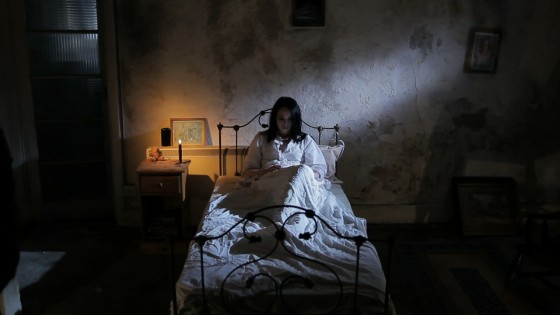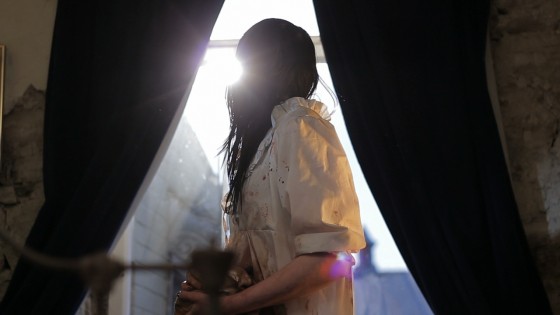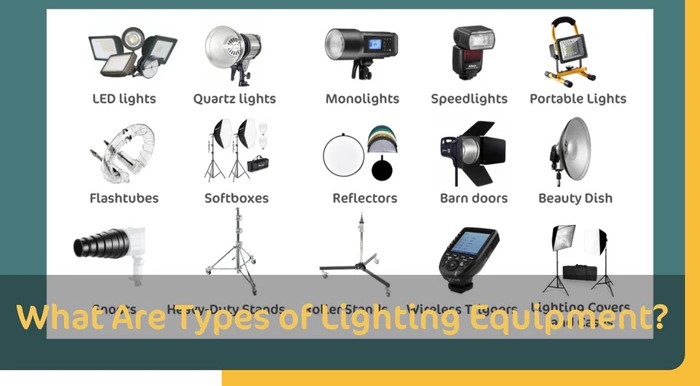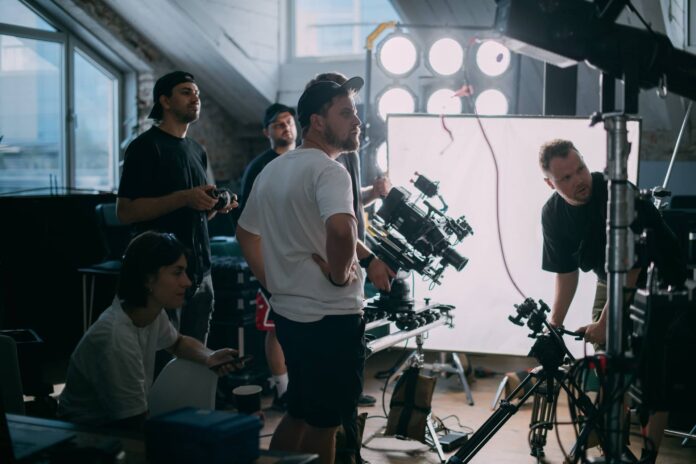Lighting equipment is one of the most powerful yet often overlooked tools in filmmaking. More than just a technical requirement, lighting shapes how audiences emotionally connect with a scene, understand the story, and perceive the characters. From the soft glow of a sunrise that signals a new beginning to the harsh shadows of a dimly lit alley suggesting danger or suspense, lighting is storytelling in its own right.
For filmmakers especially those working on short films with limited budgets understanding and using lighting effectively can elevate a project from amateur to cinematic. This article explores the fundamentals of film lighting, how it can be used to tell compelling stories, essential lighting gear for short film production, creative alternatives when equipment is limited, and how artificial intelligence is beginning to transform the future of lighting on set.
What Is Lighting Equipment in Films
In filmmaking, lighting equipment comprises the tools and devices used to control light: its source, intensity, hardness/softness, color, direction, spread, and quality. Lighting doesn’t just allow us to see actors and sets; it shapes mood, defines time of day, establishes atmosphere, supports character, defines spatial relationships, and often communicates narrative subtext. Similarly, sound design tips like layering ambient sounds, using silence strategically, and controlling sound dynamics work hand in hand with lighting to deepen the emotional impact and immerse the audience fully in the story’s world.
Key elements of film lighting include:
- Light sources (natural or artificial): sunlight, HMI lights, LEDs, tungsten bulbs etc.
- Modifiers: diffusers, flags, scrims, reflectors, gobos, barn doors anything that shapes or softens or blocks light.
- Controlling tools/rigs: stands, boom arms, grids, clamps, rigging hardware.
- Color tools: gels or filters to shift color temperature; LEDs that have adjustable color, etc.
Proper lighting is a collaborative effort: cinematographer (director of photography), gaffer, lighting technicians, grip, etc., all play roles.
How to Use Lighting to Tell Story


Lighting is one of the most powerful non‑verbal tools in film. It influences what the viewer feels, what they notice, and what remains hidden. Here are key ways lighting can tell story:
1) Mood & Tone
Bright, even light tends to feel happy, safe, open; dim, high contrast or shadowy light tends toward mystery, danger, sadness. The difference between high‑key vs low‑key lighting is a staple.
2) Character & Emotion
Lighting on a character’s face can reveal their inner state: harsh side lighting for inner conflict or moral ambiguity; soft diffused front lighting to suggest purity, vulnerability; silhouette or rim light to isolate or distance.
3) Genre & Style
Different genres have conventions in lighting: film noir or horror often use chiaroscuro (strong light/shadow contrast) or low‑key lighting. Comedies, musicals, children’s films often use high‑key lighting.
4) Space, Depth, Focus
Lighting helps define three‑dimensional space. Backlight or rim light separates the subject from the background, giving depth. Light direction and fall‑off help us see shape, texture, layers.
5) Time & Setting
The color, intensity, angle of light tell time of day (golden hour, dawn, noon, twilight). The quality (soft, sharp) can tell about weather (cloudy, harsh sun). Also, color can indicate location (warm indoors, cool outdoors, or artificial interior color).
6) Symbolism & Subtext
Light and shadow can symbolize inner good vs evil, knowledge vs ignorance, safety vs danger. For example, a character stepping from darkness into light might imply redemption or revelation.
7) Directing the Eye
Through lighting contrast, highlights, shadows, you guide viewer attention. What is lit brightly draws the eye. Shadows or darkness hide background details.
10 Essential Lighting Equipment for Short Film Production

For short film makers, resources and budgets are often limited. Still, to craft a professional look, there are certain essential lighting tools. Here are 10 of them, with notes on how to use them well and possibly economize. Using a beat sheet for your short film can help you plan exactly when and where to use these lighting tools to highlight key moments, control mood shifts, and emphasize emotional beats efficiently without wasting time or resources.
| No. | Equipment | What It Does / Why It’s Essential | Tips / Considerations |
|---|---|---|---|
| Key Light (often a powerful light like LED, HMI, or Tungsten) | The main source of illumination on the subject. It establishes the overall exposure, shadow pattern, and mood. | Use a light with adjustable brightness. Try to use modifiers to soften harshness if needed. For short films, LED panels that are bi‑color are useful. | |
| Fill Light | To lighten shadows made by the key light, reduce contrast, bring detail out in the dark side. | Fill light generally less intense, softer. Could be LED panel, bounce from reflector, or smaller light source. | |
| Backlight / Rim Light / Hair Light | Creates separation between subject and background; gives depth; highlights edges. | Position behind subject, possibly high, angled so rim shows up without bleeding light into camera. | |
| Softboxes / Diffusers | Soften light source, reduce harsh shadows; produce flattering light. | Even if using LED panels, diffusers or softboxes help. Outdoors, scrims or silk diffusers help with harsh sun. | |
| Reflectors & Bounce Cards | To bounce existing light (sunlight or artificial) back into shadows; fill light without extra fixtures. | Use silver, white, or gold surfaces as needed (gold warms, silver is brighter but can be harsh). Cheap options: boards, foam core. | |
| Flags, Cutters, Barn Doors | To block light, sharpen edges, prevent spill, craft shadow shapes. | Flags (black cloth or rigid cards) help exclude unwanted light; barn doors on Fresnels help shape beam. | |
| LED Panels (Bi‑color / RGB) | Versatile, lower heat, often portable, color adjustable, can serve multiple roles (key, fill, background). | Check CRI / TLCI (color rendering index), power consumption, battery options if on location. | |
| Fresnel Lights | Provide controllable beam width (spot to flood), with lens focusing; good for backlight, top light, side light with more control. | Use barn doors with them. Heavy units, produce more heat, require more power, so plan accordingly. | |
| Color Gels / Filters | To adjust color temperature (warm or cool), to color the scene for effect or mood. | Use only when consistent with camera white balance or for artistic effect. Mix with caution. Also, diffusion gels, ND gels for practical light dimming. | |
| Grip Gear / Rigs / Light Stands / Clamps | To position lights exactly, to safely hold them, rigging to avoid camera in shot, support modifiers. | Safety is critical. Use sandbags, clamps rated for weight. Portable rigs for location shoots help. |
These tools are the “core” package. Depending on scale, you might add haze/fog machines, specialized fixtures (spotlights, moving heads), or filters/gobos for creative texture.
Lighting Alternatives on Film Sets
Sometimes you can’t bring in or use extensive lighting gear. Perhaps budget, space, power, or time constraints limit you. Here are alternatives and work‑arounds:
1) Natural Light / Daylight
- Use windows, doors, skylights.
- Time your shoot for golden hour (just after sunrise or before sunset) for warm, soft light.
- Overcast days provide softer, diffused light.
2) Practical Lights
- Lights that are part of the scene (lamps, neon signs, streetlights) used as part of lighting scheme. They can bring naturalism and integrate with production design.
3) Reflectors / Bounce Cards
- Use walls, ceilings, mirrors, boards to bounce or reflect existing light into shadows. Often free or low cost.
4) DIY Diffusion / Scrims
- Use translucent cloths, shower curtains, white bedsheets, tracing paper to diffuse harsh light. Scrims built from frames and diffusion material.
5) LED Strips, Portable Panel Lights / Flashlights
- Smaller, battery powered lights can fill in small spaces. Used creatively with color gels.
6) Low Cost Fixtures
- Domestic (household) light bulbs with lamps, clamp lights with bulbs, tungsten globes adapted. (Careful about color temperature mismatch.)
7) Window Light + Curtains or Sheers
- Let in light through windows, control its intensity via curtains / sheers.
8) Silhouettes & Shadows
- If you can’t properly light character faces, you can use darkness, silhouettes or partial lighting to stylize.
9) Post‑production Adjustments
- Slight color correction, brightness/contrast, shadow recovery. But this is no substitute for good in‑camera lighting.
These alternatives lower cost, allow more flexible or “naturalistic” styles. But limitations include inconsistent lighting, color temperature mismatches, lack of control in tight spaces, and sometimes safety concerns (overheating, power).
How to Select the Best Lighting Equipment for Short Films
Lighting equipment in film isn’t just “lights plus bulbs”: it’s a language. With key light, fill, back light, modifiers, and accessories, you can craft mood, show character, shape the look of your story. For short film production, a core kit of essential lights, modifiers, reflectors, and rigging equipment can take you far. Finally, AI is increasingly blending into lighting pre‑vis, virtual production, real time control, and post‑production, promising exciting possibilities but also demanding care so artistry, consistency, and human vision aren’t lost.

